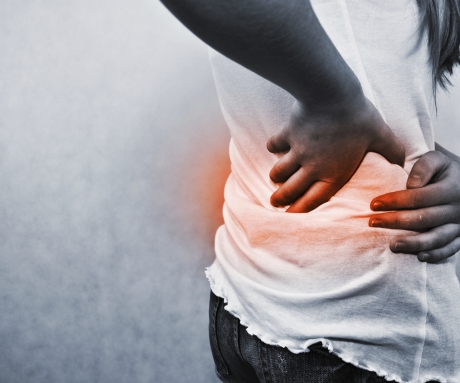Arthritis literally means “inflammation of a joint.” A joint becomes inflamed, resulting in swelling, pain and stiffness. This is usually temporary although in arthritic joints, inflammation may cause long-lasting or permanent pain and disability.
Arthritis is a major cause of lost work time and serious disability for many people.
Osteoarthritis
The most common type of arthritis – osteoarthritis – results from overuse, trauma, or the degeneration of the joint cartilage that takes place with age. Osteoarthritis is often more painful in joints that bear weight, such as the knee, hip, and spine, rather than in the wrist, elbow, and shoulder joints.
Joints that are used extensively in work or sports or joints that have been damaged from fractures or other injuries may show signs of osteoarthritis.
In osteoarthritis, the cartilage covering the bone ends gradually wears away. In many cases, bone growths called “spurs” develop at the edges of osteoarthritic joints. The bone can become hard and firm (sclerosis). The joint becomes inflamed, causing pain and swelling. Continued use of the joint becomes painful.
Rheumatoid Arthritis
Rheumatoid arthritis is a long-lasting disease, affecting many parts of the body, but mainly both large and small joints in the body and also the spine. Swelling, pain, and stiffness usually develop.
Women are three times more likely than men to have rheumatoid arthritis.
Diagnosis
Arthritis is diagnosed through a careful evaluation of symptoms and a physical examination. X-rays show the extent of any damage to the joint. Blood tests and other laboratory tests may help to determine the type of arthritis. Signs of arthritis include:
- Muscle weakness
- Tenderness
- Limited ability to move the joint
- Signs that other joints are painful or swollen (an indication of rheumatoid arthritis)
- A grating feeling or sound (crepitus) with movement
- Pain when pressure is placed on the joint or the joint is moved
Medications
Over-the-counter and prescription medications are used to control pain and inflammation in the joints. Patients with ulcers, asthma, kidney, or liver disease may not be able to safely take anti-inflammatory medications.
Injections of cortisone into the joint may temporarily help to relieve pain and swelling. Repeated, frequent injections into the same joint may lead to undesirable side effects.
Viscosupplementation or injection of hyaluronic acid preparations can also be helpful in lubricating the joint. This is typically performed in the knee.
Exercise and Therapy
Exercises and physical therapy can decrease stiffness and strengthen weakened muscles around the joint.
Canes, crutches, walkers, or splints may help relieve the stress and strain on arthritic joints. Lifestyle changes that are the less stressful to painful joints may also be helpful.
Surgery
An orthopedic surgeon will recommend surgery for arthritis when nonsurgical treatment is no longer effective. When deciding on the type of surgery, the surgeon and patient will take into consideration the type of arthritis, its severity, and the patient’s overall physical condition.
There are a number of surgical procedures including:
- Removing the diseased or damaged joint lining
- Realignment of the joints
- Fusing the ends of the bones in the joint together, to prevent joint motion and relieve joint pain
- Total joint replacement
Living with Arthritis
In most cases, persons with arthritis can continue to perform normal activities. Exercise programs, anti-inflammatory drugs, and weight reduction for obese persons, can help to reduce pain, stiffness, and improve function. In persons with advanced arthritis, orthopedic surgery can often provide dramatic pain relief and restore lost joint function.
At present, most types of arthritis cannot be cured. Researchers continue to make progress in finding the underlying causes for the major types of arthritis. In the meantime, skilled orthopedic surgeons, working with other physicians and researchers, have developed many effective treatments for arthritis.

